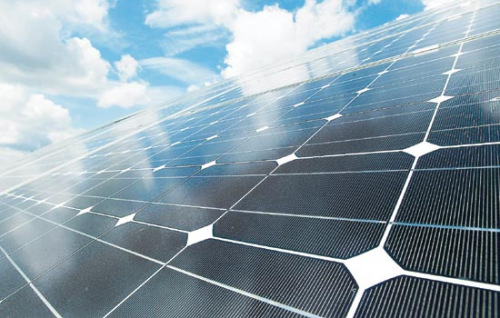
China controls 70 percent of the world's solar panel production and exports nearly 90 percent of its products to the eurozone and the United States. However, Chinese companies are starting to look to the domestic market as a result of the shrinking overse
![Workers assemble solar modules at a factory in Nantong, in East China's Jiangsu province. There are more than 2,000 companies in the country's photovoltaic industry. [Photo/China Daily] Workers assemble solar modules at a factory in Nantong, in East China's Jiangsu province. There are more than 2,000 companies in the country's photovoltaic industry. [Photo/China Daily]](U154P886T1D21681F14DT20120813100426.jpg)
Workers assemble solar modules at a factory in Nantong, in East China's Jiangsu province. There are more than 2,000 companies in the country's photovoltaic industry. [Photo/China Daily]
Just nine months after the United States initiated an investigation against China's solar panels industry, Europe — the largest buyer of Chinese solar products — is likely to start another round of a trade war with Chinese manufacturers.
German company SolarWorld AG has filed a petition with the European Union to request an anti-dumping investigation on solar products imported from China.
If the EU follows the US precedent and launches an anti-dumping investigation, the Chinese solar industry could suffer a serious blow, according to a joint statement issued by more than 30 Chinese companies.
The statement underlined the fact that the domestic market — despite its promising potential — is not an immediate alternative for local companies.
But things might change as the Chinese market develops.
The challenges faced by China's solar industry mirror the ones faced by Peng Xiaofeng, the founder of Jiangxi province-based LDK Solar.
The New York-listed company made Peng the fourth-richest man on China's Hurun Wealth List in 2008, when he was only 33 years old. LDK Solar used to be ranked No 1 in Asia for its wafer production capacity.
Today, the company is still No 1 in the industry, but now for the amount of debt it holds on its balance sheet. And bankruptcy rumors have plagued it recently.
Chinese manufacturers export nearly $2 billion worth of solar panels annually to the US. And nearly 60 percent of China's solar exports — which are worth $35.8 billion — were shipped to the European market in 2011.
While eurozone demand is shrinking due to the debt crisis and subsidy cuts, the US is imposing punitive tariffs, as high as 250 percent, which may block some Chinese companies from the market.
Weakening external demand and a small domestic market have left Chinese solar manufacturers struggling. Major players, including Suntech Power Holdings, LDK Solar and Yingli Green Energy Holding, all posted bigger-than-expected losses in the first quarter of the year.
But Chinese companies are starting to look to an expanding domestic market as a result of the shrinking overseas markets.
Promising market
According to an estimate by US-based researcher NPD Solarbuzz, only about 70 percent of China's solar modules production will be exported this year, down from 95 percent in 2010. Exports from Hebei province, one of the major solar manufacturing bases and the home of Yingli, decreased by one-fourth in the first half of the year.
A vast Chinese market is a vital source of demand for the country's makers of renewable-energy equipment.
"China will become the world's largest solar market in the next two to three years," said Wang Yiyu, Yingli's chief strategy officer.
Last year, China overtook Japan as Asia's biggest solar market, and its growth is likely to continue. Some 3,000 megawatts of solar facilities will be installed in China this year, up from about 800 mW in 2010, Bloomberg New Energy Finance reported.
NPD Solarbuzz is even more optimistic, predicting that the country will add about 5,000 mW of solar capacity in 2012. With European governments considering further cuts in subsidies, China might even finish the year as the world's largest solar market, ahead of today's leaders, Germany and Italy.
Industry targets have been laid down and subsidies splashed out.
The growth of the photovoltaic industry in China has been supported by a positive policy environment, which is now acting as a solid foundation for increased adoption of the photovoltaic technology.
Key incentive policies in China include both feed-in-tariff mechanism and government rebate programs.
FIT is a policy mechanism designed to accelerate investment in renewable energy technologies. It achieves this by offering long-term contracts to renewable energy producers, usually based on the cost of generation of each technology.
And the central government is continuing to work on new incentive schemes, such as the Renewable Portfolio Standard Management Measures and the Distributed Generation Management Measures, which could be rolled out during 2012, according to the research note by Ray Lian, senior analyst at Solarbuzz.
Since last year, China has started using FIT to guarantee the prices that utilities must pay solar power producers for their electricity. The program guarantees solar developers a payment of 1 yuan per kilowatt-hour, or 1.15 yuan per kWh in some cases depending on the timing and location of the project.

Copyright ©1999-2011 Chinanews.com. All rights reserved.
Reproduction in whole or in part without permission is prohibited.